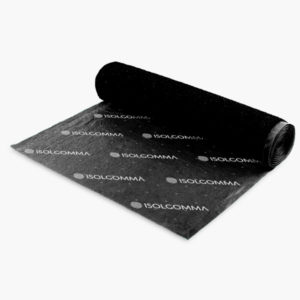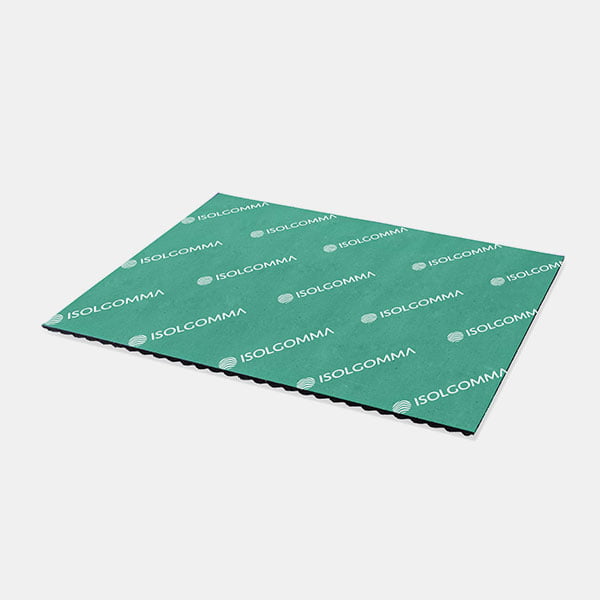

Including acoustic underlays in renovation projects also helps ensure compliance with building insulation standards and soundproofing regulations, providing peace of mind for homeowners and builders alike. Acoustic Underlay for Tile Flooring . Soundproofing Material Products from this Soundproofing Supplier are affective acoustic solutions. In conclusion, acoustic underlays from Buildtec Acoustics provide an effective solution for soundproofing floors, enhancing room acoustics, and improving overall comfort. https://en.wikipedia.org/wiki/Soundproofing . The underlays act as a cushion that helps to minimize the transmission of vibrations and sound through the floor. For example, underlays installed beneath medium-density fibreboard (MDF) or gypsum drywall help absorb vibrations and reduce unwanted sound transmission.
Impact noise results from vibrations caused by activities like walking, moving furniture, or using appliances such as washing machines. These underlays not only help reduce noise but also enhance thermal conductivity, supporting efficient heat transfer within the room. For instance, Tecsound underlays are commonly used beneath concrete or screed subfloors to add an additional layer of soundproofing that is effective against vibration and noise.
The use of recycled fibers and materials encourages recycling while reducing the environmental footprint of soundproofing installations.
Environmental considerations are central to the design of acoustic underlays. Environmental considerations are a key aspect of acoustic underlay design.
The primary function of acoustic underlay is to address both impact noise and airborne sound.
Reflection
When sound waves hit a medium, the reflection of that sound is dependent on the dissimilarity of the material it comes in contact with.[8] Sound hitting a concrete surface will result in a much different reflection than if the sound were to hit a softer medium such as fiberglass. In an outdoor environment such as highway engineering, embankments or paneling are often used to reflect sound upwards into the sky.
Diffusion
If a specular reflection from a hard flat surface is giving a problematic echo then an acoustic diffuser may be applied to the surface. It will scatter sound in all directions.
Active noise control
In active noise control, a microphone is used to pick up the sound that is then analyzed by a computer; then, sound waves with opposite polarity (180° phase at all frequencies) are output through a speaker, causing destructive interference and canceling much of the noise.
A detailed discussion on the science behind sound absorption materials, covering best practices, materials, and applications.
Posted by Francis McKenna on 2023-12-23
A detailed discussion on how to reduce traffic noise at home, covering best practices, materials, and applications.
Posted by Francis McKenna on 2023-06-18
A detailed discussion on office soundproofing: creating a quiet workspace, covering best practices, materials, and applications.
Posted by Francis McKenna on 2023-04-16
A detailed discussion on the role of acoustic panels in noise control, covering best practices, materials, and applications.
Posted by Francis McKenna on 2023-07-09
A detailed discussion on soundproofing schools and educational facilities, covering best practices, materials, and applications.
Posted by Francis McKenna on 2023-11-28
A detailed discussion on best soundproofing solutions for commercial spaces, covering best practices, materials, and applications.
Posted by Francis McKenna on 2023-01-07
A detailed discussion on how to reduce echo and reverberation in large spaces, covering best practices, materials, and applications.
Posted by Francis McKenna on 2023-03-16
A detailed discussion on industrial soundproofing: reducing noise in factories, covering best practices, materials, and applications.
Posted by Francis McKenna on 2023-01-29

Acoustic underlay is an effective solution for managing noise control in both residential and commercial spaces. Acoustic underlays are also effective for vibration isolation, particularly in spaces with significant sources of vibration, such as near heating equipment or heavy appliances. Acoustic underlay is an important component in managing noise control in both residential and commercial spaces. When considering soundproofing solutions, acoustic underlays provide an effective means to reduce noise pollution, improve room acoustics, and create a comfortable environment. Adhesive or double-sided tape can be used to secure the underlay in place, while ensuring tight seams between pieces to prevent gaps that may reduce performance. Additionally, these materials provide thermal insulation, improving the thermal resistance of a room while managing noise levels.
By selecting the appropriate product for the specific noise control requirement, homeowners and businesses can create a quieter, more comfortable atmosphere. Acoustic underlays are also effective for vibration isolation, especially in spaces with significant sources of vibration, such as near heating equipment or heavy appliances. Whether in a single-family detached home or a semi-detached house, installing acoustic underlay ensures that daily activities do not adversely affect others in the building. Before installing an acoustic underlay, it is important to ensure that the subfloor-whether concrete, particle board, or cement-is clean, level, and dry. The compatibility with various floor finishes makes acoustic underlays an essential component of modern flooring design, helping to create a visually appealing and acoustically comfortable space.
From addressing noise pollution to improving energy efficiency, acoustic underlays are a versatile solution that supports both functionality and aesthetics in modern building design. By utilizing high-density materials like crumb rubber and cork, acoustic underlays effectively control noise, reducing its impact on occupants in adjacent rooms or units. The materials used in acoustic underlays, such as foam, cork, and natural rubber, are effective in reducing vibrations and controlling sound. During renovations, installing acoustic underlays can significantly improve the acoustic properties of existing floors, whether in residential or commercial settings. Acoustic underlay is an essential component in managing noise control in residential and commercial spaces.
Acoustic underlays made from polyvinyl chloride (PVC) or cork are ideal choices, as they balance both thermal insulation and soundproofing requirements. The choice of acoustic underlay depends on the type of noise that needs to be managed. Acoustic underlays are compatible with various flooring materials, including tiles, carpet, and wood. Including acoustic underlays in renovation projects also helps ensure compliance with building insulation standards and soundproofing regulations, providing peace of mind for homeowners and builders. Airborne noise, such as music or conversations, can be reduced by choosing underlays with higher sound transmission class ratings.
The installation of acoustic underlays is straightforward and can be carried out by both professionals and do-it-yourself (DIY) enthusiasts. Adhesive or double-sided tape can be used to secure the underlay in place, while ensuring tight seams between pieces to prevent gaps that could reduce performance.
The choice of acoustic underlay depends on the type of noise to be managed. wall
Impact noise, such as footsteps on laminate flooring or vibrations from appliances, can be minimized using dense materials like natural rubber or foam.
Acoustic underlays are highly versatile and can be used in a range of settings, from residential homes to commercial spaces like offices or retail environments.


Furthermore, these materials are low in volatile organic compound (VOC) emissions, ensuring a healthier indoor environment. This process involves transforming sound energy into heat, which then dissipates without causing disturbances.
By reducing both airborne and impact noise, these underlays help create a peaceful environment, whether at home, in the office, or in commercial buildings. For example, underlays installed beneath medium-density fibreboard (MDF) or gypsum drywall help absorb vibrations and reduce unwanted sound transmission. The materials used in acoustic underlays, such as foam, cork, and natural rubber, are highly effective in reducing vibrations and controlling noise. Acoustic underlays help to absorb these sounds, resulting in improved room acoustics. This helps enhance communication between occupants by reducing noise interference.
These products provide greater efficiency in both heating and noise control, ensuring comfort throughout the year. Adhesive or double-sided tape can be used to secure the underlay in place, while tight seams between pieces should be maintained to prevent gaps that could impact performance. They are particularly effective when used with materials like ceramic tiles or floating floors, providing both sound insulation and comfort underfoot.


The use of recycled fibers and materials helps promote recycling, while minimizing the environmental footprint of soundproofing installations. These underlays not only help with noise reduction but also improve thermal conductivity, promoting efficient heat transfer in the room. In residential buildings, whether in a semi-detached house or an apartment, acoustic underlays are commonly installed under laminate flooring, hardwood, or carpets to reduce noise transmission through walls, ceilings, and stairs. Environmental considerations are central to the design of acoustic underlays.
The installation of acoustic underlays is straightforward and can be carried out by both professionals and do-it-yourself (DIY) enthusiasts. Buildtec Acoustics offers a variety of acoustic underlays to meet different needs, including those designed for underfloor heating systems. Installing an acoustic underlay beneath carpets in office settings can help reduce foot traffic noise and other disturbances, improving the overall room dynamics.
During renovations, installing acoustic underlays can significantly improve the acoustic properties of existing floors, whether in residential or commercial settings. Buildtec Acoustics offers a variety of acoustic underlays to meet different needs, including those designed for underfloor heating systems. Impact noise occurs from activities like walking, moving furniture, or using appliances such as washing machines, while airborne noise includes sounds like conversations, music, and television. recycling
Airborne noise, such as music or conversations, can be reduced by selecting underlays with higher sound transmission class ratings. Acoustic underlays are versatile and can be used in a variety of settings, from residential homes to commercial spaces such as offices or retail environments. Buildtec Acoustics offers underlays made from environmentally friendly materials, such as cork, recycled crumb rubber, and natural wool.